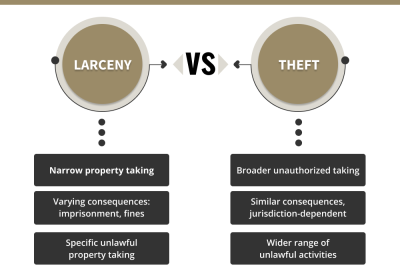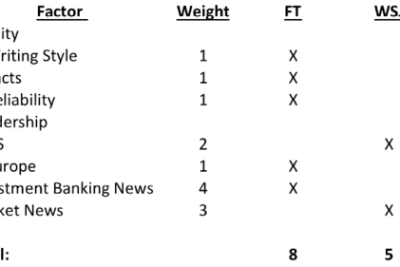
How to Write the Inequality Represented by a Number Line: A Step-by-Step Guide

- Understanding Number Lines: A Key to Writing Inequalities
- Step-by-Step Guide to Writing Inequalities from Number Lines
- Common Mistakes When Writing Inequalities from Number Lines
- Real-World Applications of Inequalities Represented on Number Lines
- Practice Problems: Write the Inequality This Number Line Represents
Understanding Number Lines: A Key to Writing Inequalities
Number lines are essential tools in mathematics that visually represent numerical values and their relationships. They provide a straightforward way to understand the concept of inequalities, which are expressions that show the relative size of two values. By grasping how to utilize number lines, students can better comprehend how inequalities work, making it easier to write and solve them.
What is a Number Line?
A number line is a straight horizontal or vertical line that is divided into equal segments, each representing a number. The position of each number indicates its value relative to others. For example, numbers increase from left to right on a horizontal number line, with negative numbers on the left and positive numbers on the right. This visual representation is crucial when it comes to understanding inequalities.
Using Number Lines to Represent Inequalities
When writing inequalities, number lines help to illustrate the solution set clearly. For instance, if you have the inequality x < 3, you can represent this on a number line by shading all the numbers to the left of 3, indicating that x can take any value less than 3. Similarly, for x ≥ 2, you would shade 2 and all numbers to the right, showing that x can be 2 or any value greater than 2. This visual aid allows for an immediate understanding of the range of possible solutions.Key Symbols in Inequalities
When working with inequalities, it is important to understand the symbols used to represent them. Here are the most common inequality symbols:
- <: less than
- >: greater than
- ≤: less than or equal to
- ≥: greater than or equal to
Each of these symbols corresponds to a specific way of shading on the number line, which further emphasizes the importance of understanding number lines when writing and interpreting inequalities. By mastering these concepts, students can enhance their mathematical skills and improve their problem-solving abilities.
Step-by-Step Guide to Writing Inequalities from Number Lines
To write inequalities from number lines, it’s essential to first understand the representation of numbers and their relationships on a number line. Number lines visually display values in a linear format, making it easier to identify the range of numbers that satisfy a particular condition. Here’s a systematic approach to translating these visual representations into mathematical inequalities.
Step 1: Identify the Key Points
Start by observing the number line and identifying the key points, which are usually marked with solid or open dots. A solid dot indicates that the number is included in the inequality (≤ or ≥), while an open dot signifies that the number is not included ( < or >). For example, if you see a solid dot at 3, it implies that the inequality will include 3, while an open dot at 5 indicates that 5 is excluded from the range.
Step 2: Determine the Direction of the Inequality
Next, assess the direction in which the shaded area extends. If the shading goes to the right of a point, it signifies that all numbers greater than that point are included in the solution. Conversely, if the shading extends to the left, it indicates that all numbers less than that point are part of the solution. For instance, if the shading starts at a solid dot at 2 and extends rightwards, the inequality would be written as x ≥ 2.
Step 3: Combine the Elements
Finally, combine the identified points and direction to write the complete inequality. Pay attention to whether you have multiple points or ranges. If the number line shows two separate shaded regions, you may need to express the inequality using "or." For example, if one region includes numbers less than 1 (open dot at 1) and another includes numbers greater than or equal to 4 (solid dot at 4), the final expression would be written as x < 1 or x ≥ 4.Following these steps will allow you to accurately translate the information presented on a number line into clear and precise inequalities.
Common Mistakes When Writing Inequalities from Number Lines
When interpreting number lines to write inequalities, students often make several common mistakes that can lead to misunderstandings. One frequent error is misinterpreting the direction of the inequality symbol. For instance, if a number line indicates that a point is shaded to the left of a specific value, students may incorrectly assume it represents a greater than condition instead of a less than condition. Remember, the direction of the arrow indicates whether the values are less than (<) or greater than (>).
Another common mistake involves the inclusion or exclusion of endpoints. When a number line has a closed circle at a point, it indicates that the endpoint is included in the inequality. Conversely, an open circle suggests that the endpoint is not included. Students often overlook this distinction, leading to inaccuracies in their inequalities. For example, a closed circle at 3 would translate to the inequality ( x leq 3 ), while an open circle would result in ( x < 3 ).
Additionally, students may struggle with combining multiple intervals into a single inequality. For example, if a number line shows two separate shaded regions, it’s essential to recognize that this can lead to compound inequalities. Failing to identify these relationships can result in incomplete or incorrect inequalities. Properly articulating such intervals requires a clear understanding of the logical connections between the values represented on the number line.Lastly, forgetting to reverse the inequality sign when multiplying or dividing by a negative number is a critical error that can skew the results of an inequality. This mistake often arises in more complex problems where students transition between different mathematical operations. To avoid this pitfall, it’s crucial to maintain a consistent check on the operations performed and their implications on the inequality’s direction.Real-World Applications of Inequalities Represented on Number Lines
Understanding inequalities and their representation on number lines is crucial for solving real-world problems across various fields. Inequalities allow us to express relationships and constraints that are not just limited to equal values. For example, in budgeting and finance, inequalities can help individuals and businesses determine how much they can spend without exceeding their financial limits. By representing income and expenses on a number line, one can easily visualize the range of feasible spending, ensuring that expenditures remain within budgetary constraints.
In the realm of engineering and construction, inequalities play a significant role in safety and compliance. Engineers often need to ensure that certain measurements fall within specific ranges to meet safety standards. For instance, when determining load limits for beams, inequalities can be represented on a number line to illustrate acceptable weight ranges. This graphical representation helps engineers quickly identify whether a design meets safety regulations or requires adjustments, thus preventing potential hazards.
Another practical application of inequalities on number lines is in the field of education, particularly in setting academic performance standards. Educators can use inequalities to define minimum grade requirements for passing courses or qualifying for scholarships. By plotting these standards on a number line, students can clearly see the thresholds they need to achieve, which can motivate them to improve their performance. This visual tool not only enhances understanding but also fosters accountability among students.
In the context of health and nutrition, inequalities are used to establish dietary guidelines and restrictions. For example, dietary recommendations may specify that daily sugar intake should not exceed a certain number of grams. By representing this limit on a number line, individuals can easily visualize how their current sugar consumption compares to recommended levels. This application helps promote healthier eating habits and supports individuals in making informed dietary choices.
Practice Problems: Write the Inequality This Number Line Represents
Understanding how to translate number lines into inequalities is a fundamental skill in algebra. A number line visually represents the range of numbers, allowing students to identify and express relationships between different values. In this section, we will explore how to interpret various number lines and write the corresponding inequalities.
To effectively write an inequality from a number line, first, observe the key features such as open or closed circles and the direction of the shading. Open circles indicate that a number is not included in the solution set, while closed circles signify that the number is included. For example, if a number line shows an open circle at 3 with shading to the right, the inequality can be expressed as x > 3. On the other hand, if there is a closed circle at -2 with shading to the left, the inequality would be x ≤ -2.
When practicing these problems, it’s helpful to follow a systematic approach. Begin by identifying the critical points marked on the number line. Next, determine whether the intervals are open or closed. Finally, write the inequality that accurately reflects the number lines representation. Below is a list of steps to guide you:
- Identify the endpoints of the shaded region.
- Determine if the endpoints are included or excluded (open vs. closed circles).
- Write the inequality using appropriate symbols (>, <, ≥, ≤).
As you tackle various number lines, remember that practice is key. The more problems you work through, the more intuitive it will become to convert visual representations into precise mathematical inequalities. Keep refining your skills, and soon you will be able to write inequalities from number lines with confidence and accuracy.
Did you find this article helpful? How to Write the Inequality Represented by a Number Line: A Step-by-Step Guide See more here General.
Leave a Reply





Related posts